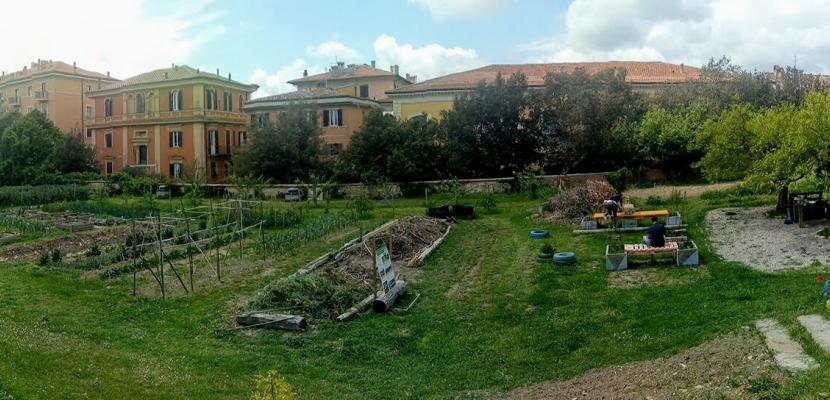
The vegetable gardens of St. Peter (Perugia-Italy): the rebirth of a forgotten place

About this good practice
In doing so, the project has enabled the recovery and retrofitting of an abandoned area of an ancient Benedictine complex, St. Peter in Perugia (Dsa3).
The project started with a participatory design process in 2014.
The project now occupies an area of 1700 m2, and it is organized in operational area:
- Greenhouse project: to allow propagation of herbaceous and shrub plants from cuttings and seeds;
- Carpentry workshop: to build raised beds and furniture;
- Aromatic plants’slope
- Vegetable gardens: that occupies one larger area and 10 in-ground planters at the entrance of the area.
- Flowering plants plots;
- Common area: equipped with barbecue, tables, and benches under two ancient persimmons trees;
- Orchard and Vineyard: 21 trees were planted (apple, prunes, cherries, and persimmons) and 20 vine plants.
The main stakeholders are:
• University faculty and staff
• University students
• Primary school children
• People from the neighborhood
• Kindergarten kids
• American college students
• Elderly students
• Non-profit’s patients with food issues (anorexia, BED, etc.)
• Psychiatric patients involved in daytime activities
Now the project is a “urban hub” for other local urban agriculture projects providing services and support.
Expert opinion
This practice is a good example of transforming an abandoned area into an urban garden through a participatory approach. It uniquely combines urban gardening with a therapy garden - a carefully designed outdoor space that provides therapeutic benefits to individuals through interaction with nature. These gardens are specifically designed to promote mental, emotional, and physical well-being. In addition, the process of wide stakeholder engagement from the beginning provided community ownership and was important factor for its success. The project demonstrated positive results as exemplified by the follow-up collaborative activities between several universities. The overall approach and results therefore can provide helpful insight and inspiration to other cities interested in transforming abandoned areas into urban gardens.
Resources needed
The number of people needed varies with the seasons and work to be done, but the heterogeneity of the groups covered all needs and workloads since 2015.
Evidence of success
From this project started a series of academic collaboration with important universities (the University of Washington in Seattle, and the University of Sheffield) that produced research projects, participation to various international conferences (IFLA 2016, Healthy Landscapes 2018, ECLAS 2018) and scientific papers (https://doi.org/10.1016/j.ufug.2018.05.007).
Potential for learning or transfer
Further information
Website
Good practice owner
You can contact the good practice owner below for more detailed information.
University of Perugia

